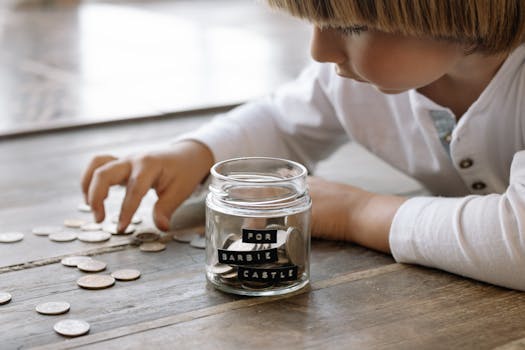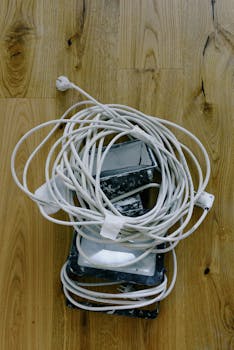Saving Strategies
Small Daily Habits That Lead to Major Long-Term Savings
Small, smart daily savings habits can quietly build major long-term results. Discover practical routines and real examples that make saving money automatic, rewarding, and life-changing over time.
Advertisement
Choosing what you do every day with your money can quietly change everything. The daily savings habits you form might seem minor, but their impact adds up and changes your financial future.
Many people look for big, bold solutions for building savings, but the true magic lies in steady, everyday actions. Consistency leads to bigger results than fleeting efforts or sporadic windfalls.
By exploring real examples and approachable strategies, you’ll see just how powerful these routines can be. Ready to reshape how you save? Let’s uncover the practical habits that build long-term security.
Building an Automatic Savings Routine You Barely Notice
Set-and-forget systems let you grow savings quietly in the background. By putting even small amounts aside automatically, you make progress without daily effort or decision fatigue.
Most banks and credit unions offer tools to automate transfers to savings—sometimes as little as $1 per day. This turns daily savings habits from wishful thinking to real progress no matter your income.
Create a ‘Transfer Trigger’ Every Payday
Link your checking account to a dedicated savings account. Set a recurring transfer of a fixed dollar amount to happen every payday, like $20 or $50. This aligns savings with your moments of abundance.
If your pay varies, set a percentage instead (say, 5%) so your habit remains stable no matter if your paycheck fluctuates. You’ll train yourself to live on what remains without feeling the pinch.
This tangible action cements your daily savings habits by making savings frictionless. It soon becomes something you hardly think about, yet the balance grows steadily month after month.
Try ‘Round-Up’ Apps or Tools
Many financial tools now offer a round-up feature that moves spare change from purchases into savings. Buy a coffee for $2.75, and $0.25 funnels automatically into your savings stash.
This method imitates the old-school change jar but with digital convenience. The amounts feel trivial in the moment but quietly accumulate into meaningful progress by year’s end.
Pairing this with manual transfers amplifies your daily savings habits effortlessly. You’ll look back, surprised at how these micro-moves add up to real money over time.
| Method | Setup Effort | Savings Potential | What to Do Next |
|---|---|---|---|
| Automatic Transfers | One-time setup | High (predictable) | Contact your bank, choose an amount, and schedule recurring transfers |
| Round-Up Apps | App linkage | Moderate (surprise savings) | Link your debit/credit card, toggle on round-up, review results |
| Employer Payroll Savings | HR paperwork | High (directed from source) | Ask HR for split direct deposit into checking and savings |
| Manual End-of-Day Transfer | Daily attention | Variable (self-directed) | Set a reminder each night, move any unspent budget into savings |
| Sinking Fund Categories | Budget adjustment | High (planned expenses) | Divide income into targeted buckets: vacation, car, gifts, emergencies |
Zeroing In on Hidden Everyday Spending and Redirecting It
Spotting unnoticed spending leaks empowers you to reroute that money into savings. Identifying and redirecting these amounts creates a steady daily savings habits framework.
Track all small, routine expenses for a week. Flag recurring outflows you barely notice, like daily snacks or impulse digital purchases. Use that discovery to form new, intentional routines.
Pinpoint Your ‘Invisible’ Expenses
Review your online transaction history and highlight purchases under $10. These blend into the background, becoming routine more out of habit than need. Multiply a $3 expense by 20 workdays — it’s $60 monthly.
One easy rule: for every ‘hidden’ daily expense you spot, transfer the same amount to savings instead. You’ll realize which habits serve you and which you can easily swap for progress.
- Eliminate unused subscriptions by reviewing each monthly renewal and canceling anything you haven’t used in 30 days.
- Bring lunch from home two days a week and move the difference—about $10 per lunch—directly to savings on payday.
- Switch from premium coffee to basic drip for a month, logging the price difference in your budgeting app every morning.
- Pause online shopping carts for 24 hours before checkout—if you skip, move the would-be spend to savings instead.
- Evaluate ride-share usage. Set a personal cap per week and send every dollar ‘saved’ by walking instead to your rainy-day fund.
Instead of eliminating all pleasures, the goal is to take control. Each swapped expense boosts both your confidence and your daily savings habits.
Use ‘Savings Sweeps’ to Clear Out Leftovers
At the end of each week, check what’s left in your checking account before your next deposit. Sweep any unspent budget chunks (even $5–$10) into savings. Treat this as a reward for efficient budgeting.
This approach mimics how cash envelopes work—when money’s left, you pocket it for your future self, not your next craving. Over time, these sweeps become an easy routine.
- Set an end-of-week calendar reminder to review balances—use digital alerts for consistency.
- Transfer leftover grocery budget to savings and note the amount; it’s visual proof of your discipline.
- For shared households, agree on a rule: every unchecked expenditure under $20 gets redirected at week’s end.
- Celebrate with a tally—write down your total sweeps per month to see trends and build momentum.
- Temporarily increase sweep amounts after pay raises or bill reductions to accelerate progress.
Every savings sweep adds up. Over a year, even these small incremental moves create meaningful results as part of your personalized daily savings habits.
Pairing Your Savings Goals With Visible Reminders
Concrete goals become real when you make them visible every day. Use reminders and trackers to give your daily savings habits a shining target and consistent reinforcement.
Hang a picture of your goal or use sticky notes near your wallet and computer. Each small visual cue prompts mindful decisions, helping you avoid backsliding into autopilot spending.
Set Up Digital Progress Bars or Thermometers
Most banking apps let you nickname accounts or set visible savings targets. Name your account after your priority: “Emergency Fund” or “Summer Road Trip.” It’s more motivating than a generic “Savings.”
Digitally track progress with a thermometer graphic or monthly goal meter you fill in. Each move, however tiny, feels significant when represented visually—it’s like leveling up in a game.
Highlight each milestone in a calendar app with a checkmark emoji. Visual wins activate your motivation and keep your daily savings habits high when initial excitement fades.
Make Your Savings Journey Social or Competitive
Agree on saving challenges with a friend, partner, or coworker. Maybe see who can skip takeout the longest or who builds their emergency fund percentage the fastest.
Share progress on a group chat or create a simple spreadsheet for accountability. A little friendly rivalry turns otherwise dull progress into regular bursts of encouragement and pride.
Celebrate small wins—brag about your latest sweep or completed goal. Linking your daily savings habits to a supportive community adds energy and helps overcome rare setbacks.
Turning Routine Purchases Into Purposeful Trade-Offs
Every transaction offers a choice: spend now for comfort or set the money aside for a future need. Treat routine decisions as trade-offs instead of habits running on autopilot.
When you pause to ask, “Will today’s $7 lunch make me happier than $7 added to my travel fund?” you slow spending and reinforce daily savings habits one decision at a time.
Try a ‘Pause Rule’ for Non-Essential Purchases
Before buying anything outside your set bills, use a 24-hour pause. Place the item in your cart, set a reminder, and revisit the urge tomorrow. This gap slashes impulse spending.
Pair this pause with a short note on your phone: “If I skip, I’ll move the money to savings.” Real-world example: This week, you delay a shirt purchase, feel fine without it, and deposit the $30.
Consistently applying this rule builds strength like a muscle—repetition cements the trade-off mindset and makes daily savings habits second nature.
Use Spend-to-Save Pairings for Favorite Indulgences
Instead of forbidding treats, set a ‘matching’ rule—each time you buy an $8 movie ticket, move $8 to savings. This reframes the expense as both pleasure and progress.
If matching every purchase feels too steep, try a “half-match” rule—spend $10, save $5. The act of pairing creates a second-thought habit around spending, slowing you down naturally.
Making this visible, add a tally mark for each paired save in your planner. Soon, daily savings habits become associated with your rewarding moments, not just delays or sacrifices.
Making Home and Kitchen Choices That Trim Costs Consistently
Transforming routines around food, power use, and household shopping can yield hidden and recurring savings. Small shifts made daily or weekly steadily build your savings without drastic lifestyle change.
Start by taking a close look at your largest ‘variable’ living costs—groceries, utility bills, and cleaning products tend to have the most potential for impactful small changes.
Batch Meals and Limit Food Waste
Plan and cook two extra servings at dinner so you have quick lunches ready. This halves the urge for restaurant meals, redirects $8–$12 per meal to savings, and saves energy as you cook less often.
Use a whiteboard for a weekly meal plan and grocery list tied to actual recipes—this limits impulse ‘extras’ and ensures leftovers become planned lunches, not forgotten science experiments in the fridge.
Every time you skip takeout thanks to good prep, record the actual cost you avoided and transfer it to your daily savings habits fund by end of week.
Cut ‘Phantom’ Utility and Cleaning Costs
Set a timer for shorter showers and use power strips to turn off appliances completely. Each move saves money and shrinks your monthly bills with little disruption to comfort.
Swap disposable cleaning wipes and bottled water for washable cloths and a pitcher. The upfront effort is quick, and you’ll see at least $10–$20 monthly savings, growing if you make this routine.
Every new practice here has a built-in reward: lower recurring bills directly translate into more for savings, making these daily savings habits self-reinforcing and motivating as progress is tangible.
Redesigning Errands and Transportation for Steady Windfalls
Choosing cheaper or less frequent ways to get around delivers immediate, regular reward for your daily savings habits. Rethink commutes, errands, and even weekend fun for easy, repeatable wins.
Walking or biking to run a close errand can turn a $7 ride into a fitness and savings win. Stack several errands for one trip to save on gas and wear-and-tear, funneling the leftover to your savings jar directly.
Optimize Routine Commutes and Supplies Runs
Start by mapping which of your weekly trips could overlap—dry cleaning, groceries, hardware store. Combine into a single outing to reduce extra miles, which slashes fuel and impulse buys.
Set recurring reminders to check public transit options for longer routes—a $2 ride instead of $12 ride-share keeps $10 back with every trip. Set an app alert for the lowest fares.
Track your reduced spend monthly, and add even half the savings to your daily savings habits account—a small labor that pays off many times over in the long term.
Build a “No-Spend” Day Routine for Quick Boosts
Block out one or two ‘no spend’ days per week. Choose a set calendar day (say, every Monday and Wednesday) where every single purchase, except bills, is paused.
Use a worksheet or app to log these streaks. On each no-spend day, transfer the amount you would’ve spent on daily treats or errands straight to savings, reinforcing good habits.
This rule can become a friendly challenge with housemates or friends—see who can tackle more ‘zero spend’ days. Over a month, just 8 such days equals real progress and a proud smile at your balance.
Closing the Loop: Review, Adjust, and Celebrate Your Progress
Long-term savings hinge on reviewing your daily savings habits regularly and celebrating even modest progress. Set monthly calendar appointments to check your savings balance and review what routine created the strongest results last month.
Mark every milestone—saving your first $100, completing three consecutive sweep weeks, or finally building that $500 buffer. Treat yourself to a minor, guilt-free reward for every goal crushed, like a favorite book or a fancy afternoon coffee.
Share your process out loud with a friend or loved one. Telling someone about a successful switch from daily snacks to “savings jar” makes your win real, and hearing “nice work” keeps the momentum alive in your daily savings habits journey.
Frequently Asked Questions
What if my income is unpredictable or varies month to month?
Aim for percentage-based habits instead of fixed amounts. Allocate, for example, 5–10 percent of each income deposit, rather than a set dollar. This keeps your savings consistent as your paychecks shift.
Is it better to automate small savings or wait for bigger lump sums?
Automating small, recurring savings proves more effective over time. Waiting for big windfalls leads to inconsistency. Every little bit, repeated daily or weekly, makes long-term savings reliable and stress-free.
How do I stop myself from raiding my savings for temptations?
Keep your main savings account at a separate institution you don’t check daily. Add a waiting period for withdrawals, like 48 hours. This pause curbs impulsive use and protects your routine progress as daily savings habits grow.
What should I do when I miss a daily habit?
Missing a day isn’t failure, just a chance to review. Don’t double up to “catch up.” Instead, restart the next day, focusing on your last successful routine and building forward from your win.
Do these strategies work for everyone, regardless of financial goals?
Yes. The core behaviors—small, consistent actions, visual tracking, and regular reviews—benefit anyone, regardless of whether you’re saving for emergencies, travel, or retirement. Tailor the amounts and habits to fit your life for maximum flexibility.





